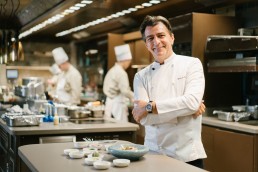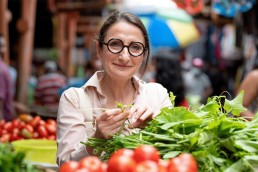Fusing French cuisine with Japanese ingredients, Alain Ducasse’s new outpost offers a refined dining experience in a setting inspired by nature, writes Mandi Keighran.
Gastronomic tourists flock to Japan for the cuisine – a cornucopia of national and regional delicacies, from steaming bowls of ramen and simmering pots of shabu-shabu to exquisite slices of sashimi. With the opening of Esterre, a new restaurant at the Palace Hotel Tokyo by renowned chef Alain Ducasse, it’s French cuisine – albeit reimagined with Japanese ingredients – may soon top the must-visit list for foodies visiting the capital.
“Japan has a lot to offer in terms of superb ingredients from the earth and from the sea,” says Ducasse, who has accumulated a veritable constellation of 21 Michelin stars over the course of his career. “Applying French culinary techniques to great local produce makes an extraordinary mix.” Think octopus from Aomori served from a grill at the table with potatoes, capers and sage, or vegetables from Saitama and cooking jus with coffee from Paris. This crafted blend of Japanese and French influences is not only the inspiration behind the menu, but also the elegant interiors by Japanese studio Simplicity.
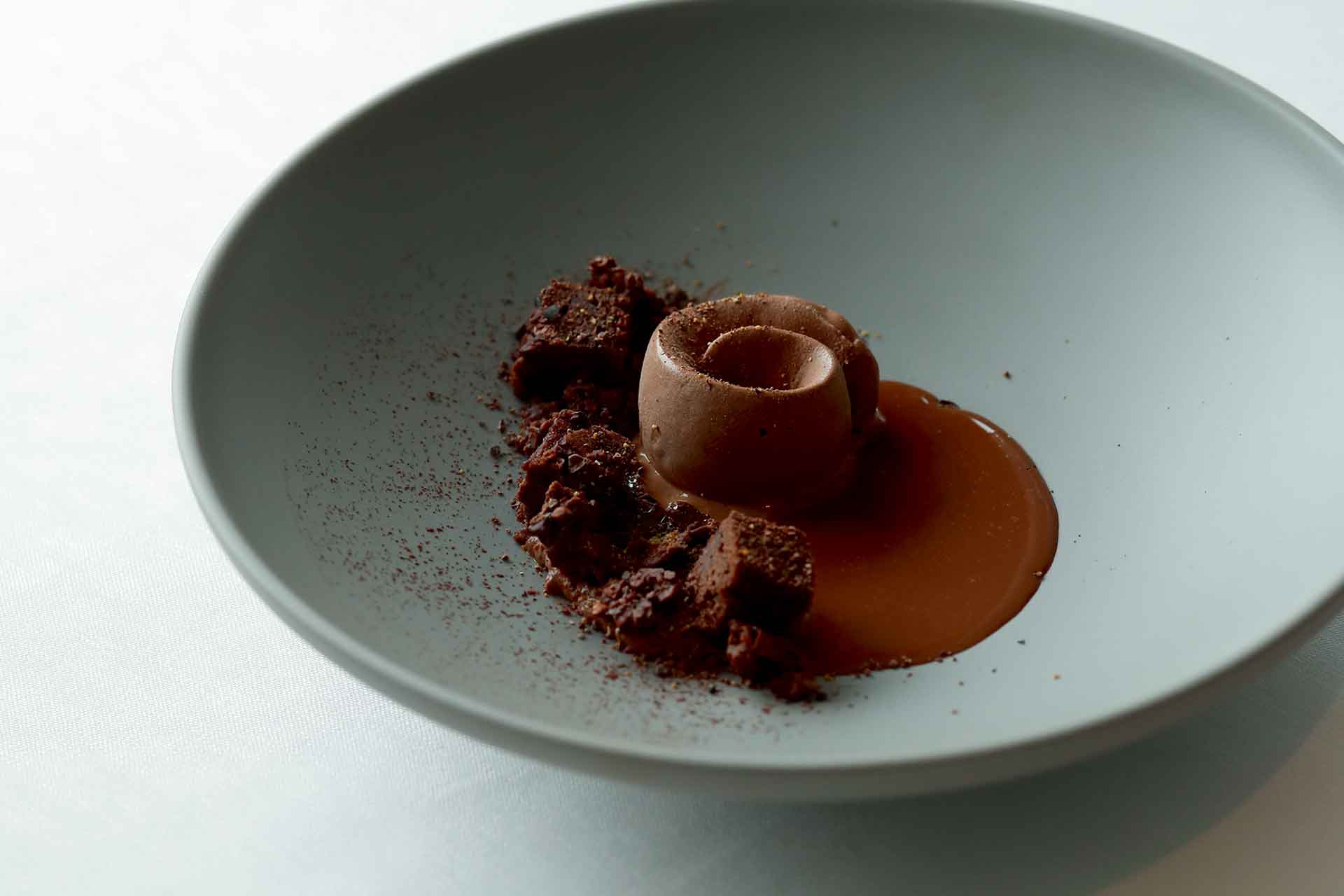
Esterre – with Chef de Cuisine Martin Pitarque Palomar at the helm – replaces Palace Hotel Tokyo’s previous fine-dining restaurant Crown, which offered a more traditional French dining experience. “It was similar to what other hotels were doing and we wanted to offer something different,” says Mika Kim, the hotel’s Associate Director of Marketing & Communications. “By using Japanese ingredients, it becomes more appealing to our international guests and creates a unique experience that can only be found here.”
The setting too is standout, with the sixth-floor restaurant offering spectacular views over the Imperial Palace and its gardens. During the day, natural light floods through floor-to-ceiling windows and is softly amplified by the white Japanese washi paper-clad walls. As day turns to night, the atmosphere of the restaurant changes and the park views are replaced by swathes of inky blackness punctuated by lights from the surrounding cityscape. The view, much like the menu, also undergoes dramatic seasonal changes, hence a palpable connection to the natural world.
This focus on nature’s bounty and rhythms is first reflected in the restaurant’s name – Esterre translates to Mother Earth in the Occitan dialect spoken in the south west of France, where Ducasse was born – while the interiors feature natural materials such as Japanese washi paper and timber to create an elegant setting that complements rather than competes with the food.
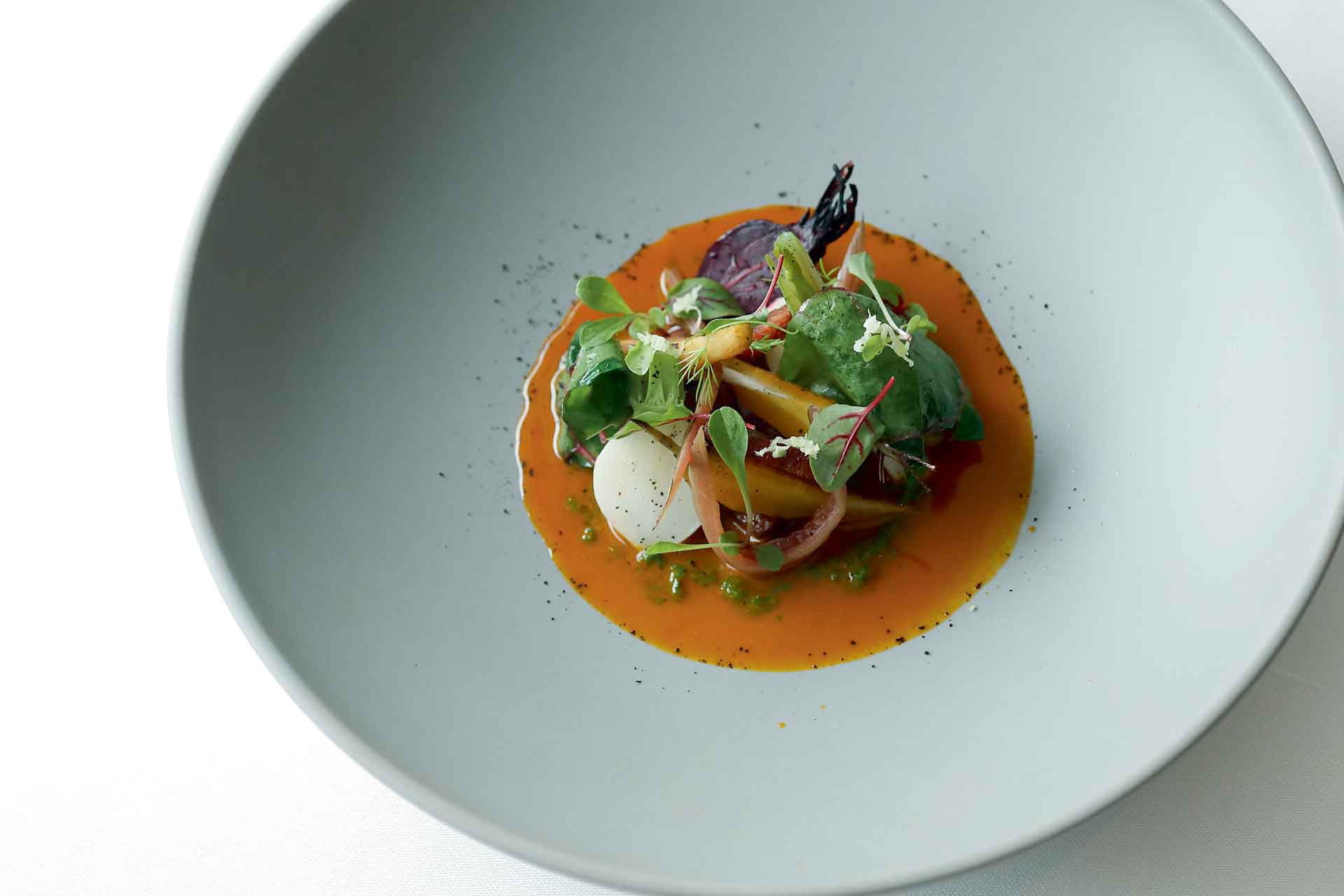
“We wanted to create an atmosphere in line with Esterre’s concept; a place where the stories of land and sea are encountered,” says Shinichiro Ogata, founder of Simplicity. “We hope a natural beauty can be felt in the restaurant as the natural materials used throughout will change in texture and colour with the passing of time. We wrapped the interior with washi – which, because it originates from trees, exudes a sense of elegance and calm during the dining experience. The earthy colour scheme used as a base is intended to represent the continuous, circular flow of life.”
The restaurant is entered through a long, narrow corridor adorned with art by Japanese master plasterer Shuhei Hasado – an installation inherited from the previous restaurant – with floors crafted in the traditional naguri-style of wood carving. The chestnut wood entrance is marked by a bountiful display of fruit and vegetables sculpted in timber by artist Reiji Kosaka. “By making guests travel this narrow path in order to enter the restaurant creates the psychological effect that the room into which they subsequently enter is much more spacious,” says Ogata. This effect of the space opening up as guests enter is all the more powerful thanks to the striking views, a defining feature of the dining room. Simplicity intentionally kept the interiors minimal, with few visible fixtures and fittings, and adjustable lighting concealed within a gold leaf ceiling feature.
The restaurant seats 60 across the main dining room and three private dining rooms, each featuring works by iron artist Morison Kobayashi in which handcrafted branches seemingly sprout from the walls and framed leaves resemble delicate seasonal flora. Ligne Roset Saint James chairs – originally designed by architect Jean Nouvel for the Hôtel Saint James in Bouliac, France – furnish the dining rooms, punctuating the minimal space with their idiosyncratic form and imbuing the restaurant with personality. The earth-coloured leather upholstery was specially commissioned for Esterre at the request of Ducasse. Moveable curved timber screens separate some tables from the entrance, providing added privacy.
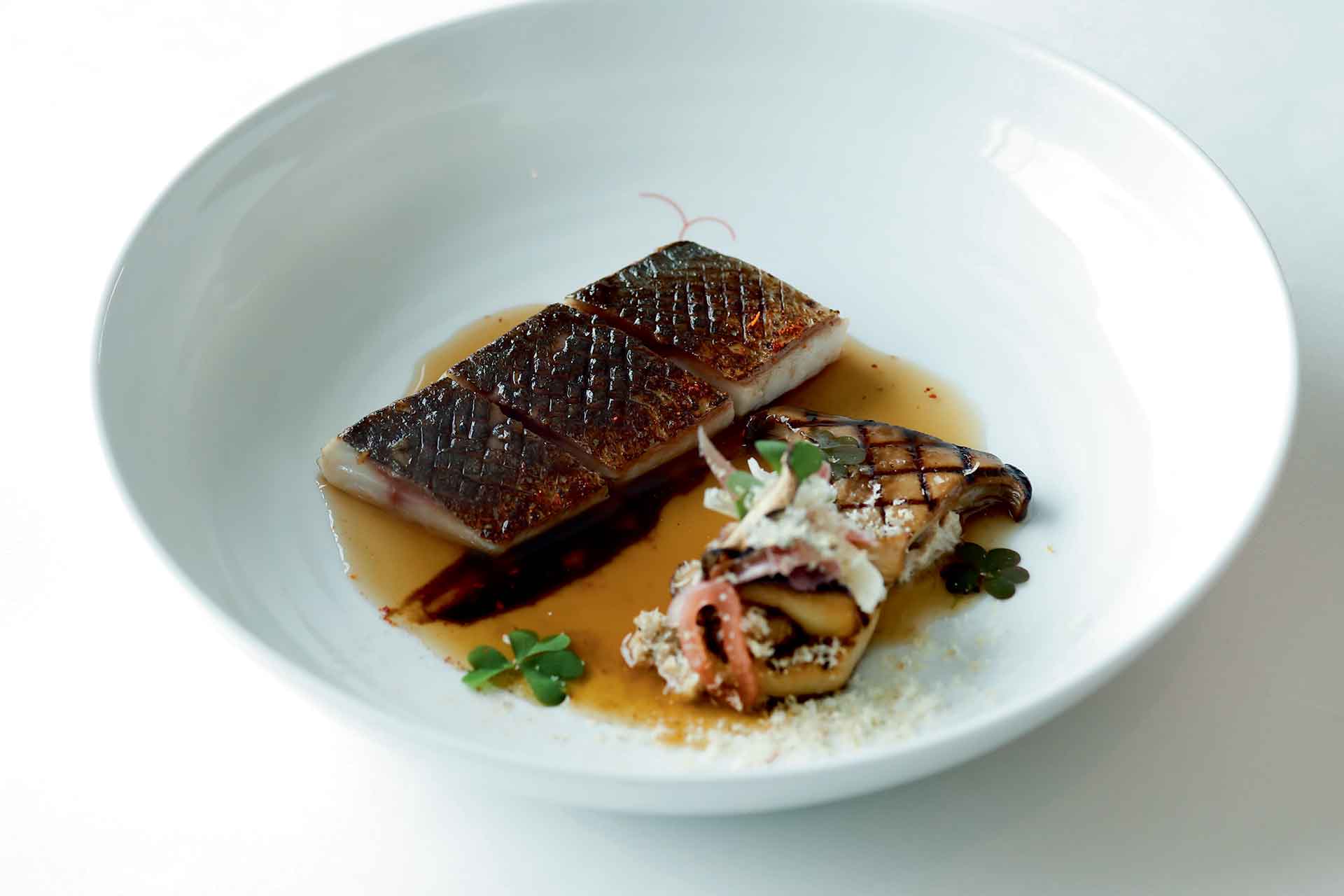
Throughout, the design approach is elegant and pared back – much like Ducasse’s signature less-is-more approach to French cooking. “Esterre is the result of a momentum,” says the chef. “Contemporary haute-cuisine must lead the way towards new dining habits. Less fat, less sugar, less salt, less meat, and more vegetables, more cereal, more fruits – this is the path to the new, sustainable cuisine. This vision also requires favouring the local produce made available by producers who have a respect for nature. When I am in Japan, I remain a chef trained in the French techniques, yet I want to use Japanese products.”
As such, produce is sourced from across Japan – vegetables from the nearby Saitama prefecture; seabass and scallops from Aomori and Hokkaido; and shrimp and salmon from Nagasaki and Yamaguchi.
Other products such as chickpeas, coffee and chocolate are sourced from France, creating and celebrating a connection between the two countries. “Esterre is the expression of Mother Nature at the best time to experience it,” concludes Pitarque Palomar. “The chef obeys nature, manifesting his most profound consideration and finding in it an inexhaustible source of inspiration.”
IN A BITE
Covers: 60
Operator: Palace Hotel Tokyo
Interior Design: Simplicity
F&B Consultant: Ducasse Paris
Chef Partner: Alain Ducasse
Chef de Cuisine: Martin Pitarque Polmar
Pastry Chef: Thomas Moulin
Head Sommelier: Takamasa Soto
www.palacehoteltokyo.com
CREDITS
Words: Mandi Keighran
Photography: © Takaaki Ito
Magazine: Supper 20
Related Posts
18 April 2023
A New Level: An interview with Yannick Alléno
17 November 2022
